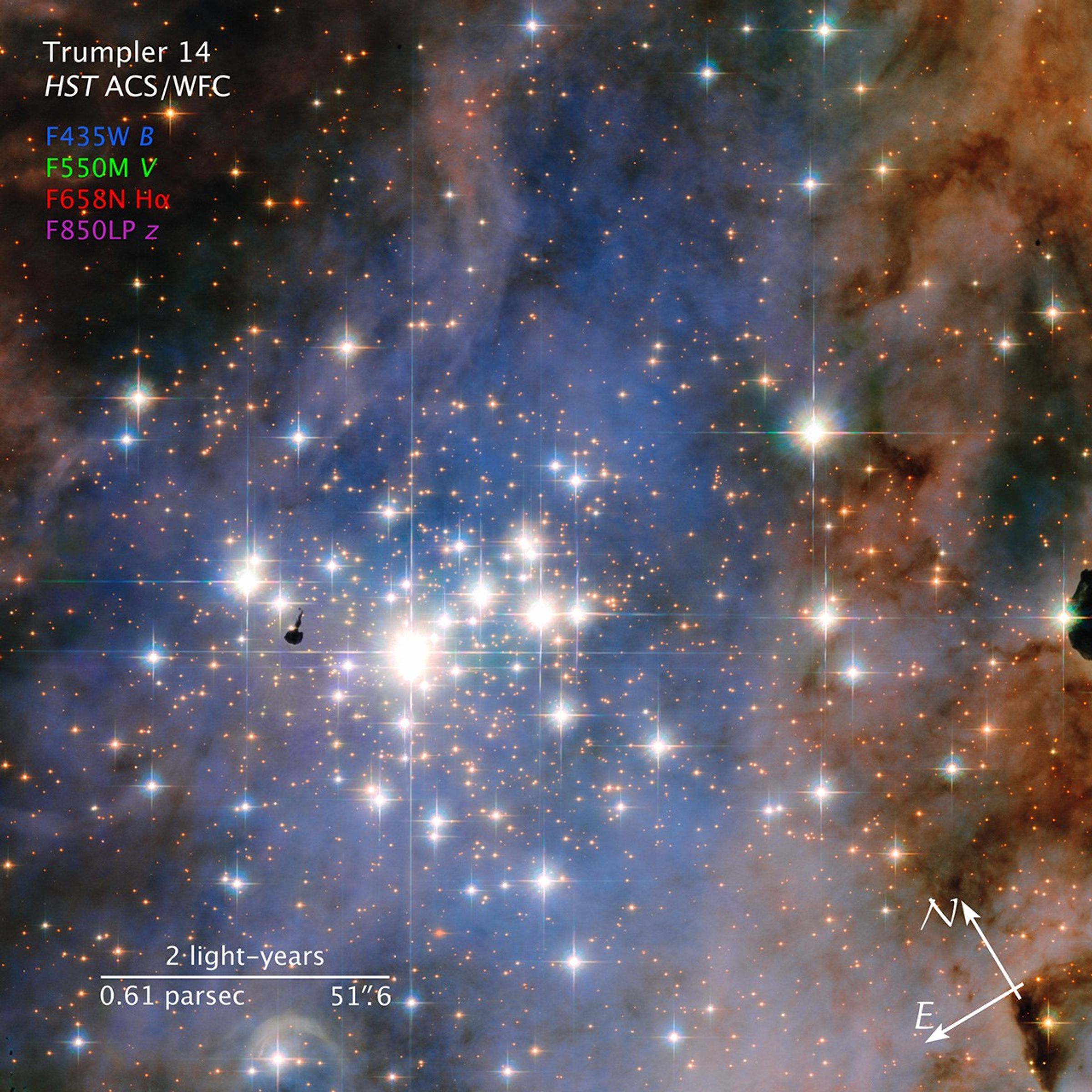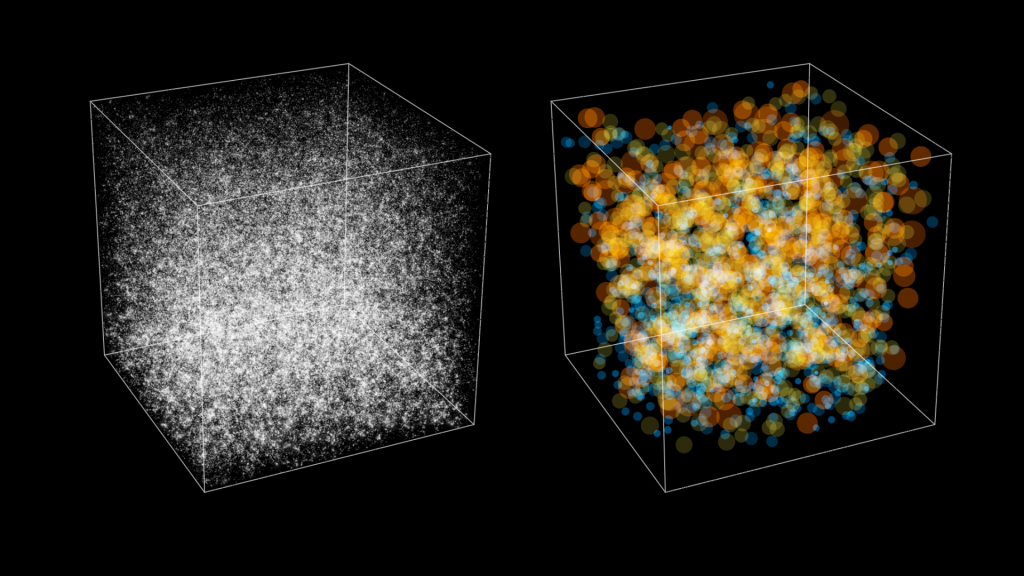1 min read
Compass and Scale Image for Trumpler 14

About the Object
- R.A. PositionR.A. PositionRight ascension – analogous to longitude – is one component of an object's position.10h 43m 55.92s
- Dec. PositionDec. PositionDeclination – analogous to latitude – is one component of an object's position.-59° 33' 0.0"
- ConstellationConstellationOne of 88 recognized regions of the celestial sphere in which the object appears.Carina
- DistanceDistanceThe physical distance from Earth to the astronomical object. Distances within our solar system are usually measured in Astronomical Units (AU). Distances between stars are usually measured in light-years. Interstellar distances can also be measured in parsecs.8,000 light-years (2,450 parsecs)
About the Data
- Data DescriptionData DescriptionProposal: A description of the observations, their scientific justification, and the links to the data available in the science archive.
Science Team: The astronomers who planned the observations and analyzed the data. "PI" refers to the Principal Investigator.The HST data were taken from proposals 10241: N. Smith (University of Arizona), J. Bally (University of Colorado, Boulder), N. Walborn (STScI), and J. Morse (Rensselaer Polytechnic Institute); and 10602: J. Maíz Apellániz (Institute of Astrophysics of Andalusia, Spain), N. Walborn and E. Nelan (STScI), N. Morrell (Carnegie Institution of Washington), and V. Niemela (Universidad Nacional de La Plata). - InstrumentInstrumentThe science instrument used to produce the data.HST>ACS/WFC
- Exposure DatesExposure DatesThe date(s) that the telescope made its observations and the total exposure time.July 17, 2005, and July 29, 2006
- FiltersFiltersThe camera filters that were used in the science observations.F435W (B), F550M (V), F658N (H-alpha+[N II]), and F850LP (SDSS z)
- Object NameObject NameA name or catalog number that astronomers use to identify an astronomical object.Trumpler 14
- Object DescriptionObject DescriptionThe type of astronomical object.Open Cluster in the Carina Nebula
- Release DateJanuary 21, 2016
- Science ReleaseHubble Unveils a Tapestry of Dazzling Diamond-Like Stars
- Credit

Color Info
Color InfoA brief description of the methods used to convert telescope data into the color image being presented.
This image is a composite of separate exposures acquired by the ACS/WFC instrument. Several filters were used to sample various wavelengths. The color results from assigning different hues (colors) to each monochromatic (grayscale) image associated with an individual filter. In this case, the assigned colors are: Blue: F435W (B) Green: F550M (V) Red: F658N (H-alpha+[N II]) Purple: F850LP (SDSS z)

Compass and Scale
Compass and ScaleAn astronomical image with a scale that shows how large an object is on the sky, a compass that shows how the object is oriented on the sky, and the filters with which the image was made.
Related Images & Videos
Share
Details
Last Updated
Aug 17, 2025
Contact
Media
Claire Andreoli
NASA’s Goddard Space Flight Center
Greenbelt, Maryland
claire.andreoli@nasa.gov






























